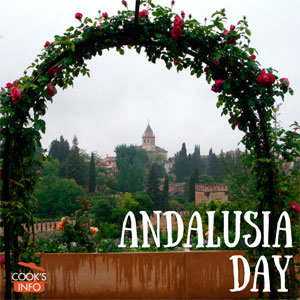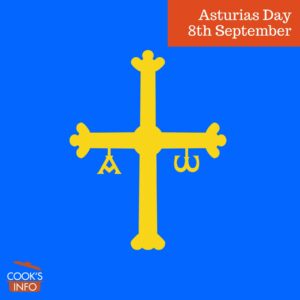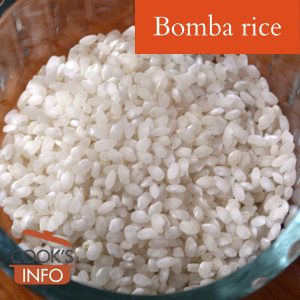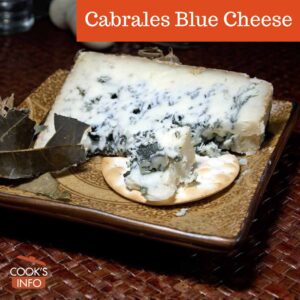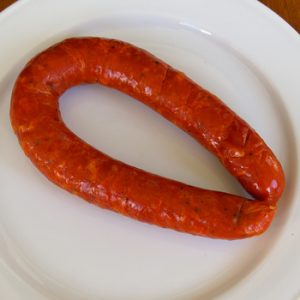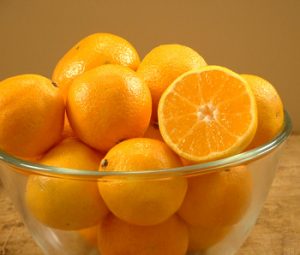In Spanish, “A la Navarra” means “with tomatoes.” Navarre, a region of Spain, is the largest tomato-producing area in Spain. A classic trout dish, “Truchas a la navarra” (“Navarre-style trout”) is a whole trout that is cleaned, stuffed with a slice of Spanish air-cured ham, floured, pan-fried and served on a bed of tomatoes and…
Spanish Food
A la Riojana
A la Riojana means “in the style of Rioja.” Rioja is a region in northeastern Spain. In food terms, this often means with red peppers (pimentos, not hot chiles) and / or paprika. The dish will often include chorizo or ham or some form of pork as well. Lamb Cutlets a la Riojana have red…
Aioli
Aioli is a thick creamy garlic sauce used in the cooking of Provence, France, and of Catalonia in Spain. It is usually served on the side at room temperature. It is often compared to mayonnaise in its texture, but it is not actual mayonnaise. It is mainly served with cold or hot boiled fish. It…
Alcaparrado Olives
This is a Spanish style of preserving and selling olives, rather than an actual “botanical” variety of olive. It’s a jar of green olives and capers mixed together. Sometimes the olives may be stuffed with pimiento as well. The olives aren’t necessarily always pitted, though of course they will be if they have been stuffed….
Alcaparrado Olives
This is a Spanish style of preserving and selling olives, rather than an actual “botanical” variety of olive. It’s a jar of green olives and capers mixed together. Sometimes the olives may be stuffed with pimiento as well. The olives aren’t necessarily always pitted, though of course they will be if they have been stuffed….
Andalusia Day
The 28th of February is Andalusia Day. It is celebrated in the Andalusia region on the southern coast of Spain with flamenco dancing, bullfighting, and gazpacho.
Arbequina Olives
Arbequina Olives are very small and oval. The trees are small but frost hardy. The trees can be planted very densely, but are hard to harvest with mechanical means because the small olives cling tightly to the branches. They can pollinate themselves. The olives mature in mid-November. The olives are used both for oil and…
Arbosana Olives
Arbosana Olive trees start producing olives after two years, and reach full fruiting in five years. The olives are small, but with a good oil yield of 19 to 20%. The oil has a pungent, fruity taste. It is often blended into oils from other olives to improve their taste and aroma. The trees can…
Asturias Day
The 8th of September is the National Day for the Spanish region of Asturias. The day is celebrated with bagpipes, dancing and local food such as sausages, cheeses and the regional cider.
Bizcocho Borracho
Bizcocho Borracho is a Spanish dessert. Ladyfinger cookies are soaked in espresso and either brandy or rum, then laid out in layers with custard and bitter chocolate between the layers. Instead of custard, you may also find sweetened mascarpone cheese. Bizcocho Borracho is generally layered to a height of about 2 ½ to 3 inches…
Bomba Rice
Bomba and Calasparra rice are types of paella rice. They are grown around the town of Calasparra, in Spain in the Murcia mountains neighbouring Valencia. The rice is grown along the Segura River, which brings cold water from the top of the mountains. The water passes through the paddies; its coldness slows the growth of…
Boquerones
Boquerones are unsalted anchovies (a fish) cured in vinegar. ” Anchovies” are the same fish preserved in salt. Boquerones are tender, white and juicy, and have a milder, more delicate flavour than processed anchovies usually do, missing their fishy or salty taste. They are not cooked before being cured. Boquerones are packed in olive oil…
Cabrales Blue Cheese
Cabrales blue cheese is made in the Asturias region of Spain from cow, goat and/or sheep milk and has a creamy, sharp taste that is a bit less salty than other blue cheeses. The cheeses are aged in caves, during which time the blue mould naturally colonizes the cheeses.
Calçot Spring Onions
This is a special way of growing onions that is practised in the Valls district of Catalonia, Spain — two hours to the south-west of Barcelona. Fully grown white onion bulbs are planted in the fall, let grow for a few months, then gathered and stored. They are then replanted the next fall. They sit…
Caña de Lomo
Caña de Lomo are cured pork loin sausages made from Iberian pigs. [1] The sausages are relatively dark red, with white streaks of fat, and with a typical weight between 31 to 35 oz (900g to 1 kg.) To make them, salt and flavourings such as garlic, oregano, lemon and paprika are mixed together and…
Chorizo (Spanish)
Spanish Chorizo © Denzil Green Chorizo is a Spanish sausage that is hard like pepperoni, but the ingredients in it are more coarsely processed. It has a very pronounced, hearty, spicy flavour. It is usually made from the shoulder meat and the fat from a pig, aiming for a ratio of 70% meat, 30% fat….
Clementine Orange
Clementine Orange © Denzil Green Clementines are small, thin-skinned oranges that are very easy to eat. The skin peels off easily, and the sections inside separate with a minimum of effort. They will have few seeds and often can be seedless even, if bees are kept away from the tree’s blooms. Their size and ease…
Cocido Espanol
Cocido Espanol is a Spanish version of a boiled dinner. Unlike New England boiled dinners, the broth is meant to be eaten, either as a separate course, or by serving the simmered ingredients in it, like a stew. Cocido Espanol is based on meat, beans or pulses and vegetables, but really, the main ingredient is…
Cornicabra Olives
Cornicabra Olives are medium-sized olives grown in Andalucia, Spain both for oil and for making black table olives out of. The olives have an average oil yield of 23%. The oil produced from them is dense and fruity. Language Notes “Cornicabra” means “goat’s horn” in Spanish.
Crema Calatana
Crema Calatana is a version of Crème Brulée made in the Catalonia area of Spain. The custard is flavoured with peel from citrus fruit.
Denomination of Origin
This is the Spanish equivalent of the French AOC and the Italian DOC certifications. In Spanish it is called “Denominación de Origen”, or simply referred to as “DO.” It is administered in Spain by the Instituto Nacional de Denominaciones de Origen (INDO.) Like the Italian DOC, there are two levels: DO: Denominación de Origen (the…
Empanada Gallega
An Empanada Gallega is a Spanish meat pie, made large enough to feed several people as a main course. It can be square or round. It is served in slices, like a pie. The crust was made at first with bread dough. Now, a purpose-made yeast-risen dough is used. The pie has a top crust…
Empeltre Olives
These are medium-sized olives that will yield anywhere from 19 to 27% oil. The oil is considered good quality and to be of good flavour, with no bitterness. The colour of the oil will range from pale yellow to gold. Empeltre Olives are also used for table olives. When being harvested for table use, they…
Ensaimada
Ensaimada is a bread made from sweetened, yeast-risen dough, (like a sort of brioche) made in Spain, and in the Philippines. Per loaf, you use about 1 cup (8 oz / 225 g) of butter, ¾ cup (6 oz / 175 g) of sugar and 8 egg yolks. You make a creamed mixture, then add…


